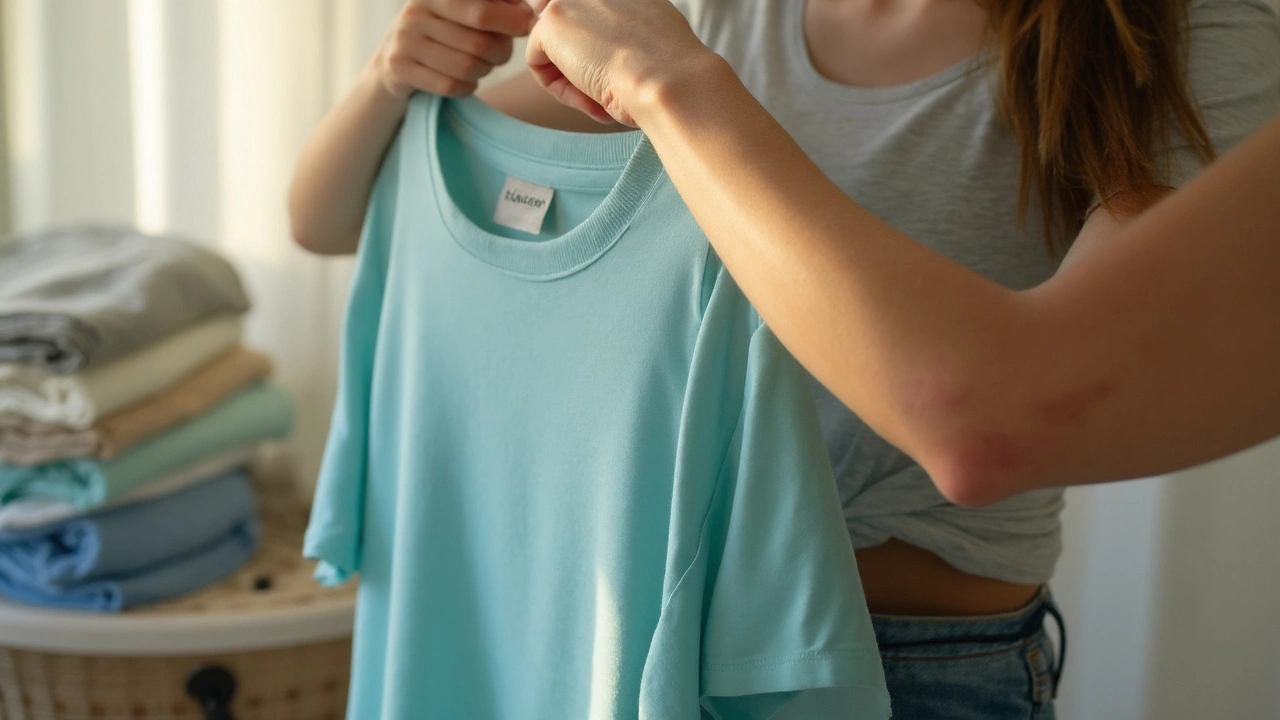Hypoallergenic Clothing: What to Look For and Why It Matters
If your skin reacts to regular shirts, socks, or pajamas, you’re not alone. Many fabrics contain dyes, chemicals, or rough fibers that can irritate sensitive skin. The good news? You can dress comfortably without triggering a rash. Below are the key things to check when you shop, plus simple steps to build a wardrobe that respects your skin.
Materials That Won’t Trigger Your Skin
First, focus on the fiber itself. Natural fibers like 100% cotton, bamboo, and linen are usually the safest bets. They breathe, feel soft, and rarely contain harsh additives. Look for labels that say “organic” or “GOTS‑certified,” because those fabrics are grown without synthetic pesticides that can linger in the material.
When you see synthetic blends—polyester, nylon, spandex—don’t dismiss them outright. Some high‑quality performance fabrics are treated to be hypoallergenic, but you’ll need to verify. Check the product description for terms like “skin‑friendly,” “low‑irritant,” or “chemical‑free finish.” If the info isn’t clear, a quick search of the brand’s website can save you from a hidden irritant.
Colors matter, too. Dark dyes often contain more chemicals than light or undyed options. If you’re prone to reactions, stick with whites, pastels, or garments labeled “undyed.” When you do buy colored pieces, rinse them inside‑out in cold water before the first wear; this can wash out excess dye and reduce skin contact.
How to Build an Allergy‑Friendly Wardrobe
Start with the basics: a few plain, organic cotton tees, a couple of soft bamboo leggings, and some breathable linen shirts. These items form the core of any outfit and can be mixed with more specialized pieces. When you need something for sports or outdoor activities, choose moisture‑wicking fabrics that are specifically marketed as hypoallergenic.
Don’t forget the underlayers. Undershirts, bras, and socks are in constant contact with skin, so they should be the softest you can find. Seamless designs cut down on friction, and tag‑less labels avoid the itch that many people experience with traditional tags.
Cleaning matters just as much as buying. Use a mild, fragrance‑free detergent and skip fabric softeners, which can leave residue that irritates skin. Rinse thoroughly and consider an extra rinse cycle for the first few washes. Dry on low heat or air‑dry to keep fibers from becoming stiff.
Lastly, keep an eye on wear and tear. Over‑time, fabric can break down, releasing tiny fibers that aggravate skin. If a shirt feels scratchy or you notice pilling, replace it before it becomes a problem.
By checking the material, choosing the right colors, and treating your clothes gently, you can enjoy a wardrobe that feels good all day. No more scratching, no more red patches—just comfortable, skin‑friendly outfits that let you focus on what matters.
-
24
Learn which fabrics trigger contact dermatitis, why they irritate, and how to choose safe, breathable alternatives for healthier skin.
Categories
Tags Weight
- online pharmacy
- side effects
- dietary supplement
- dosage
- online pharmacy safety
- drug interactions
- health benefits
- allergy relief
- autoimmune disease
- antibiotic
- pharmacy reviews
- affordable antidepressant
- gut health
- safe online meds
- prevention
- patient safety
- NSAIDs
- drug interaction
- medication safety
- blood thinners

